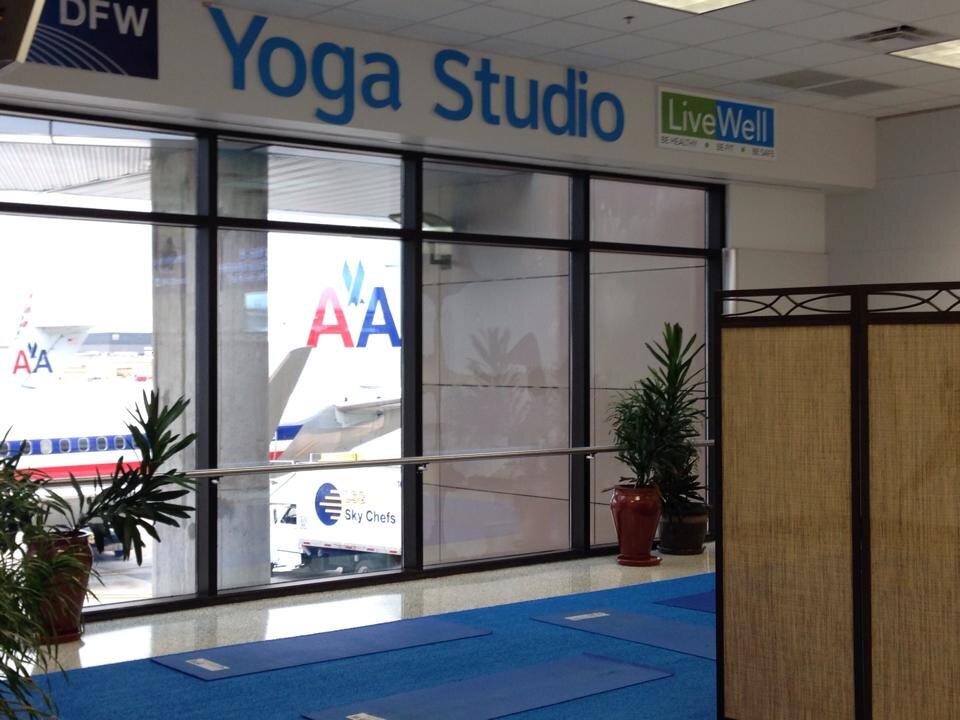
Zen Squirrel Blog
Dealing with the Unexpected
“Yoga teaches us to cure what need not be endured and endure what cannot be cured”
The unexpected isn't always avoidable, but a regular yoga practice will help you deal with it. You'll become less reactionary, connect with yourself, and live in the present moment. This can result in an improved experience for yourself, and those around you.
While traveling earlier this month, our first flight was delayed and we missed our connecting flight. The seasoned airline employee was less than sympathetic to put it mildly. The 6 travelers who missed the flight were assigned alternate travel arrangements. Arriving at the gate just 2 minutes earlier would have saved us 2.5 hours, and we were all feeling unhappy about our situation. A few simple questions can demonstrate how to handle the situation yogically.
Question #1 - Can this be cured?
Answer #1 - Nope, the attendant at the gate did not have the authority to open the door and let us take the flight.
Question #2 - How can this be endured?
Answer #2 - A meal did wonders for our moods. We found our new gate, then my husband and son played a game while I set out to explore the airport.
I was delighted to discover an airport yoga studio. It was a simple space, decorated with plants and silhouettes of yoga poses. It was located just off a quiet hallway between terminals. There were yoga videos to stream, mats to borrow, a privacy screen, and a logbook to sign. Airport yoga studios have been reported at San Francisco International Airport, Burlington International Airport, Dallas-Fort Worth International Airport, Albuquerque International Sunport, Raleigh-Durham International Airport, and Chicago's O'Hare International Airport. I highly recommend using these spaces while you are traveling. It can make a flight much more enjoyable, and healthier too! If you have experienced others, please comment in the section following this post.

Upon completion of our final flight, we were once again delayed, and folks around me were frantically attempting to position themselves to quickly exit the airplane. My family and I were waiting for them to pass, and you could feel the nervous tension building in the air. Imagine my surprise when a woman across the aisle suggested that we chant Om as a remedy to the situation. Instead of participating in the anxiety, I was able to have a very nice conversation with this California Yogi while we allowed others to go first. The things that I would have missed by getting caught up in the nervous tension. Talk about finding a way to endure!
In yoga, we practice maintaining our breath and focus in difficult situations and poses. We practice turning inward instead of comparing ourselves to others. This helps teach us to deal with our daily lives, and acts as a shock absorber for the little bumps that come along the way. It leads to a lower stress, more enjoyable life experience.
Next time you're dealing with the unexpected, ask can this be cured, and how can this be endured?
Namaste - Beth
Support in Yoga and Life
"I do it myself!" Most children utter this phrase starting at a very early age. A little later, there is generally a stage when Mom & Dad don't know anything. Such striving for independence is vital for survival in our culture, and is a necessary evil.

When we get older, we generally learn how much support our parents or caregivers actually gave us. Without support, it is much more difficult to open ourselves to new experiences.
Yogis can often behave the same way. Our vision gets clouded, and we think being able to "do it myself", without the support of a prop (a block, strap, chair, blanket, the Yoga Wall, Aerial silks, or even our beloved mat), is somehow more valuable. Sometimes, even if you can do the pose without a prop, a prop can be a huge benefit.
Here are a few ways that props can be helpful:
1. They allow the experience of poses that were previously unaccessible.
2. They help us find the balance between the sthira and sukha (steadiness and ease).
3. They allow us to have new experiences in familiar poses.
4. They allow us to experience the benefits of poses for a greater period of time.
5. They teach us how to engage our lesser used muscles.
6. They teach us to stretch our less flexible muscles.
7. They make inversions and balancing poses more accessible.

OK, so yoga props can be great tools for everyone, now what? We take our yoga back our everyday lives! Look for a way that you can or BE THE PROP for someone else. Supporting someone else will bring joy to both of you.
Be OK with accepting support. Sometimes when we are able to soften, listen, and accept help, we are able to reach new places on and off the yoga mat. Your non yoga prop may be a person, tool, discussion group, religious group, or anything else. Whatever it is, maybe you've been resistant to the prop that is the very thing that will facilitate a new experience or skill. Using a prop is not a sign of weakness, but a sign of mental strength, and awareness.
Go into the rest of your day. Realize that support is a wonderful thing! Analyze your needs for props on and off the mat, and search for a way that you can be the prop for someone else.
Namaste - Beth
Also, enjoy this short video of Dr. Geeta S. Iyengar speaking about the Yoga Rope Wall.
YOGA, MORE THAN PHYSICAL PRACTICE
Yoga's root word means union, or yolking. When you join the mind, body, and breath, a profound sense of ease and joy can be accessed. That connection and feeling is what separates the practice of asana (yoga poses) from calisthenics. As a former distance runner and recreational cyclist, I have noticed similar experiences during those activities. After the first 2 miles or so, I was always able to connect the patterns of my breath and cadence, and experience an easy, grounded sense of calm. It was not unlike the feeling that I get during meditation, or yoga practice.
As a yoga instructor, I find great joy and peace while helping students find that experience. I am becoming increasingly aware that there are many ways for people to make that connection. For years, my mother has heard me speaking of my experiences during yoga class, and frequently states, "it's kinda like when I'm quilting". I'd usually listen respectfully, but I was completely disconnected from her thought process. Recently, I have observed many true artists, such as the chef, photographer, musician, and painter. Very much like yogis, these people keenly tune their senses to the task at hand. What I mean is, that focused ease that is what separates yoga from physical exercise.
Much like the artist or athlete who is in the zone, the yogi is able to turn inward, and the need to compete with the yogi on the next mat ceases. As we practice, we begin to carry that grounded, serene feeling into the rest of our lives. That, is the magic of yoga, and why I practice continually, on and off the mat.

Photo credit Jeromy Dobson
Namaste - Beth






